How to Recover After Surf Sessions
The best surf sessions are the ones that leave your stomach and legs chafed, your eyeballs fried from looking towards the sun, cheeks sunburnt, and muscles sore from a day of catching waves.
To properly recover after a surf session is not only how you will be able to pick yourself up and surf again the very next day, but also just to feel energised and good in general, providing to your body the resources it needs to recover without pain and grow to be stronger.
Considering surfers who strive to surf better also tend to maintain a fitness routine outside of surfing, surf session recovery is even more essential, as you never want to overwork yourself to feel tired during and after surfing; so we're going to share with you a few things to keep in mind that all help your body to fully recover after a surf session.
Table of Contents
Recovery StretchesGood Nutrition
Keeping Hydrated
Better Breathing
Hot and Cold Therapy
Getting Some Rest
Surf Session Recovery Stretching
Surf recovery, and fitness recovery in general, should be viewed as a 24/7 requirement. The strategies needed to best recover take time and effort to follow through with, and most importantly, dedication.
Your surf session recovery should start well before you surf by always stretching for at least 15-30 minutes before paddling out.
When muscles are strained, you are essentially creating small tears within them that fill with lactic acid. Lactate plays a key role in promoting the growth hormone that builds muscle, which is a good thing, but lactic acid is the reason why you feel sore after surfing.
When you stretch before surfing, you are lengthening your muscles. Lengthening muscles allows for better blood flow, which helps to feed nutrients to them so that they can recover, build, and clear out the lactic acid that is causing you discomfort.
And just as essential as pre-surf stretching is post-surf stretching, as this often goes overlooked. Taking a few minutes to stretch after you surf will allow for the same benefits to your muscles, reducing soreness and the times it takes to recover after a surf session.
A surfing yoga routine is one of the most grounding, relaxing, and body-benefiting ways that you can really stretch out your body, and is highly suggested for speedy and effective surfing recovery.
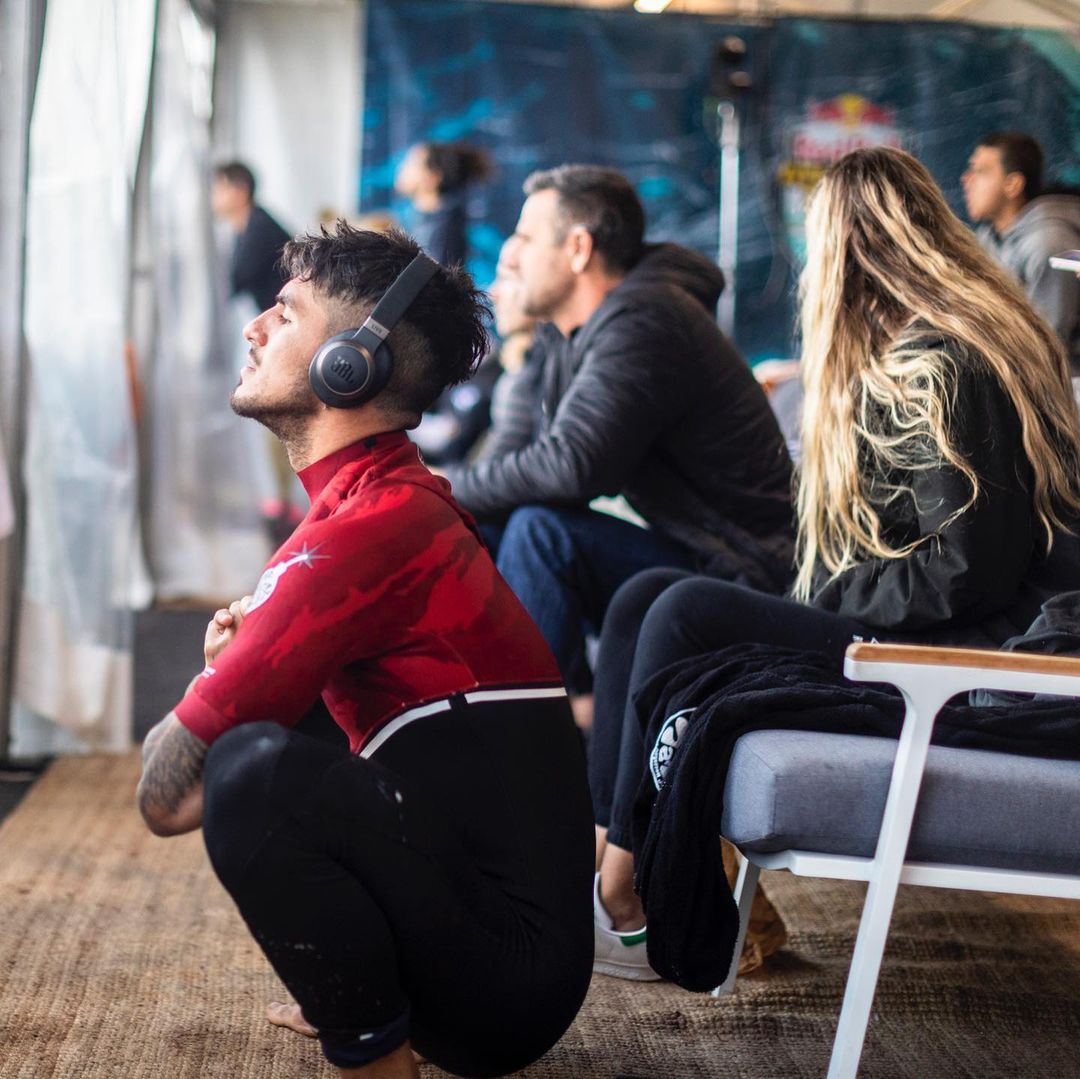
Gabriel Medina pre heat stretch
Nutrition for Surf Session Recovery
When it comes to building muscles and recovering your body after surfing or working out, the nutrients you intake are as, if not more, important than the workout itself.
And if you don't give your body the right foods, you're seriously going to suffer through some hardcore soreness and tired days ahead.
It starts with simply replenishing your body of the calories that you have lost so that you don't feel tired after surfing and so you can bring your energy levels back to normal. You also have to ensure that your muscles are getting plenty of protein, as this is a key component of reducing post-surf muscle soreness.
What you eat before and after you surf matters more than anything, but it's also rare to find a surfer who will actually paddle in to eat a quick snack. If you take the time to do this you will give your body an energy boost that will make you surf better on the spot, and you will also feel less sore as you are giving your body nutrients that it can immediately use to feed your muscles.
We won't spend too long here, as we have outlined an entire guide to proper surfing nutrition, but if you want to know how to recover after a surf session, then a vast part of that answer lies in focusing on your food; eating the right kinds, and plenty of it in a diet no different than any other athlete.
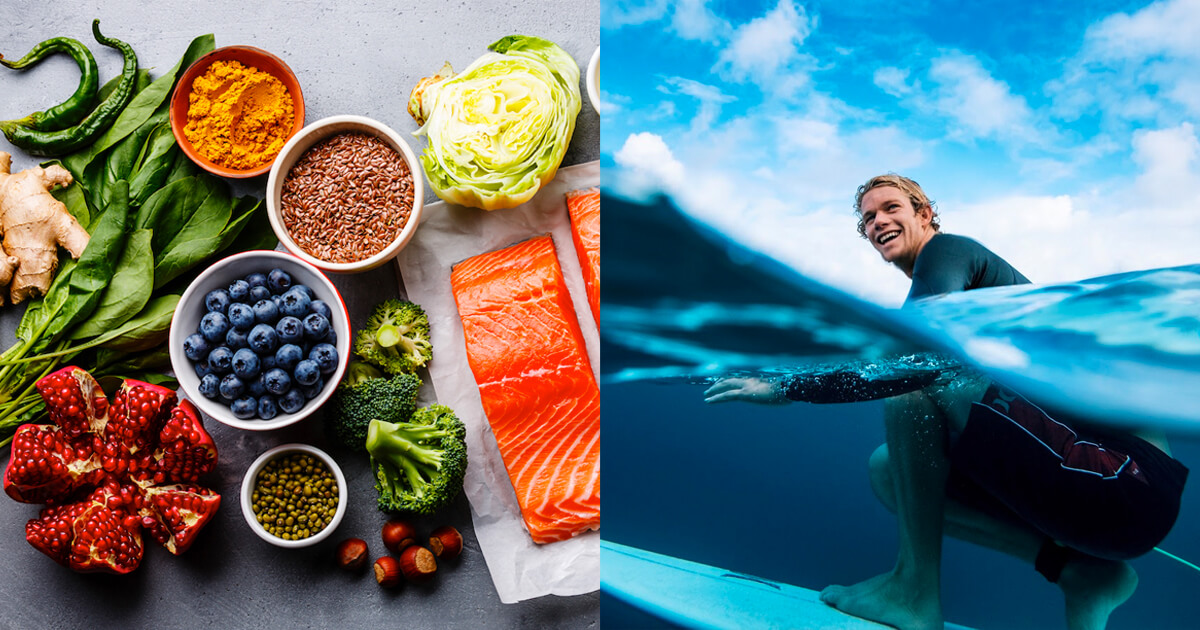
John John and a nutrient filled diet (Image credit: @ryanlochte & @parallelsea)
Hydration
Hydration is one of the key elements to maintaining high energy levels so that you don't feel tired after surfing, as well as helping to alleviate sore muscles and promote their proper growth.
Ample water intake allows your body to flush out any toxins, helping to keep your blood flow clean and clear so that it can focus on delivering the right nutrients you need for growth and to reduce soreness.
Protein synthesis is the process of rebuilding muscles after they have been worked, and your muscles must be hydrated for proper synthesis. Without it, they can feel sore for days.
Glycogen is a nutrient that is essential for muscle recovery. When you eat carbs, your digestion system turns these carbs into sugar (glucose) and the sugar into glycogen, and water plays an integrated role in this digestion process.
Surfing is extremely physical, and you burn through a vast majority of your hydration supply when surfing, so to make sure that you can recover after a surf session you must hydrate before, during, and after. We have all the info you need for ample hydration lined out for you in our Guide to Surfing Hydration, so give it a look as you really want to take care of hydration.
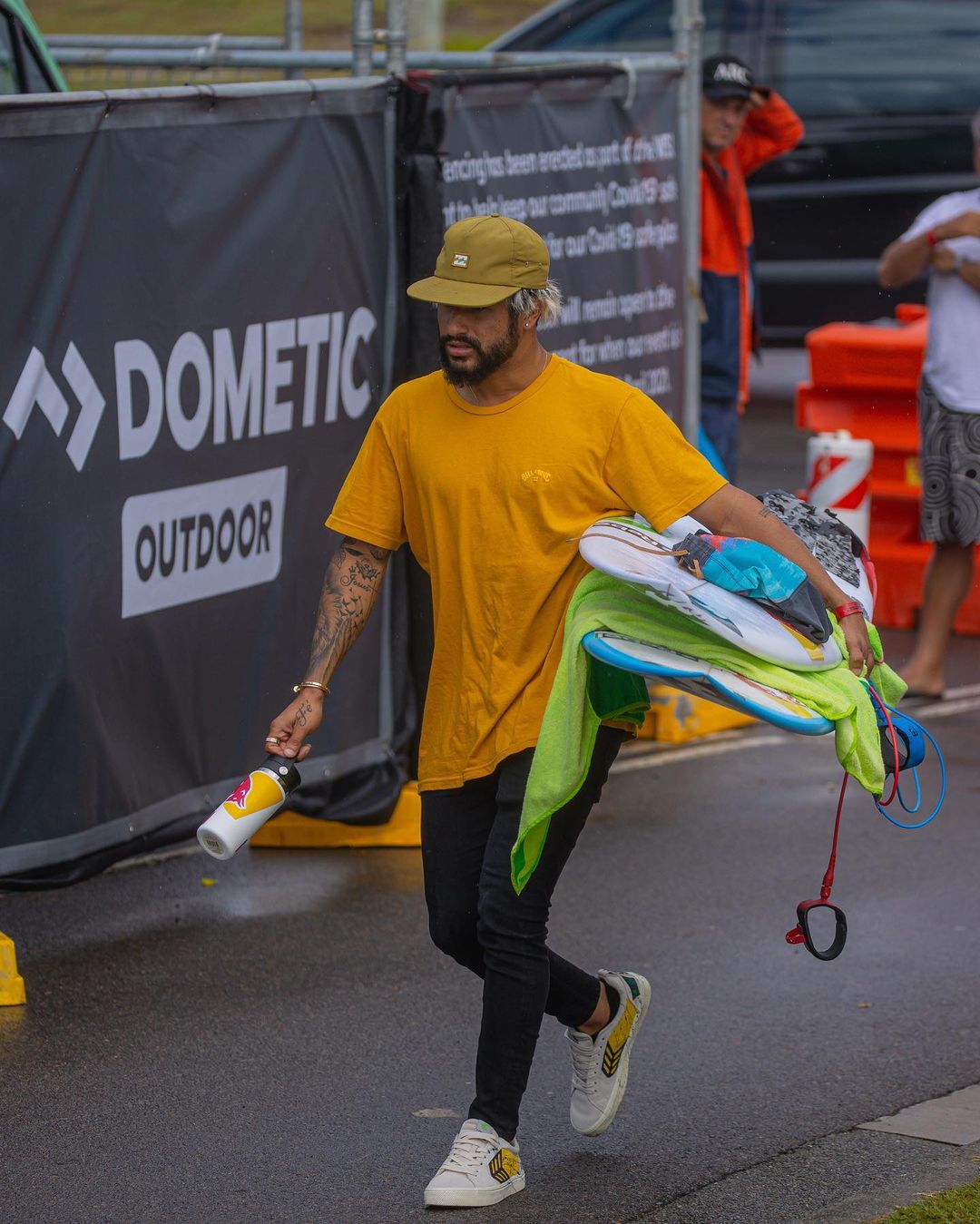
Italo Ferreira making sure he stays hydrated at all times
Breathing Techniques
Breathing techniques are seriously under the radar in terms of acting as a tool for muscle recovery.
So not only will breathing techniques help your lungs to handle long hold-downs with ease, but strong lungs also allow for ample oxygen delivery to your muscles.
After a workout, you have to bring your body back to a state of homeostasis so that it can begin to recover, and depending on the intensity of your workout there's a good chance that you have drained your body of its entire oxygen supply.
A lack of oxygen will make you feel tired after surfing, will lead to grogginess, and will hinder protein synthesis and muscle growth, making you feel sore as all heck.
To recover after a surf session, take some time to practice deep breathing by sitting still and closing your eyes, breathing deep into your belly for extended periods to lower your heart rate, and work at giving back your body its lack of oxygen so that it can properly recover.
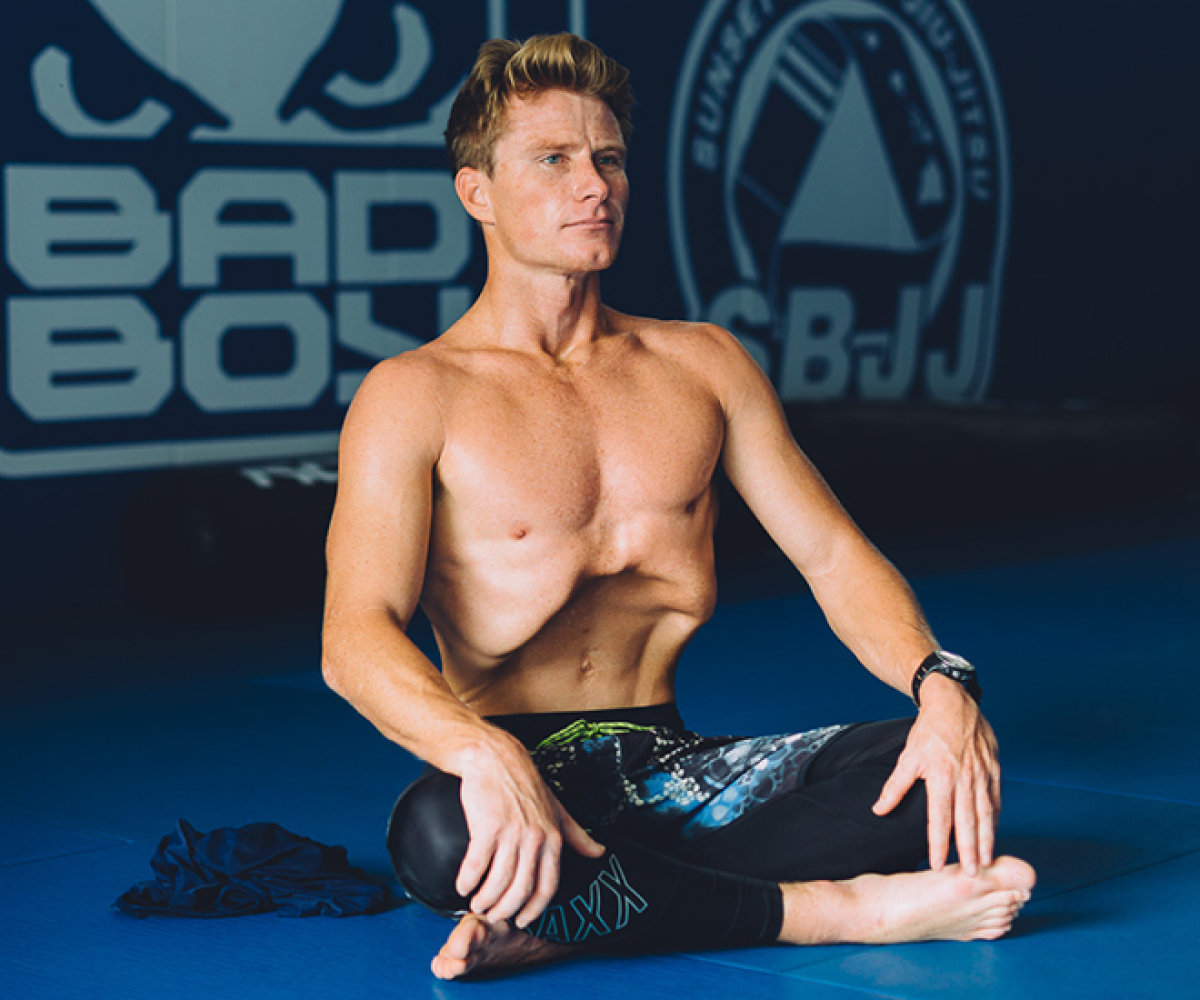 Waterman Mark Healing practicing breath training, Photo: Jeremiah Klein
Waterman Mark Healing practicing breath training, Photo: Jeremiah Klein
Hot and Cold Therapy
If your muscles are seriously hurting after a long day of waves, then you should always think to ice them and warm them. You don't need one of those freezing chambers or an ice bath, although that might feel kind of great, as there plenty of simple ways to utilise hot and cold therapy at home.
For cold, just take a cold bath or shower and alternate ice packs on and off of the sore areas for 15 minutes. The cold will help to alleviate inflammation of the muscles which is a driving source of your pain.
For hot therapy, a heat pack on the affected areas, a hot bath, or a hot shower will still do wonders, especially if you notice that your muscles feel as though they are spasming.
Where cold reduces inflammation, heat aims to relax muscles and promote blood flow for better circulation and nutrient delivery, making them less sore.
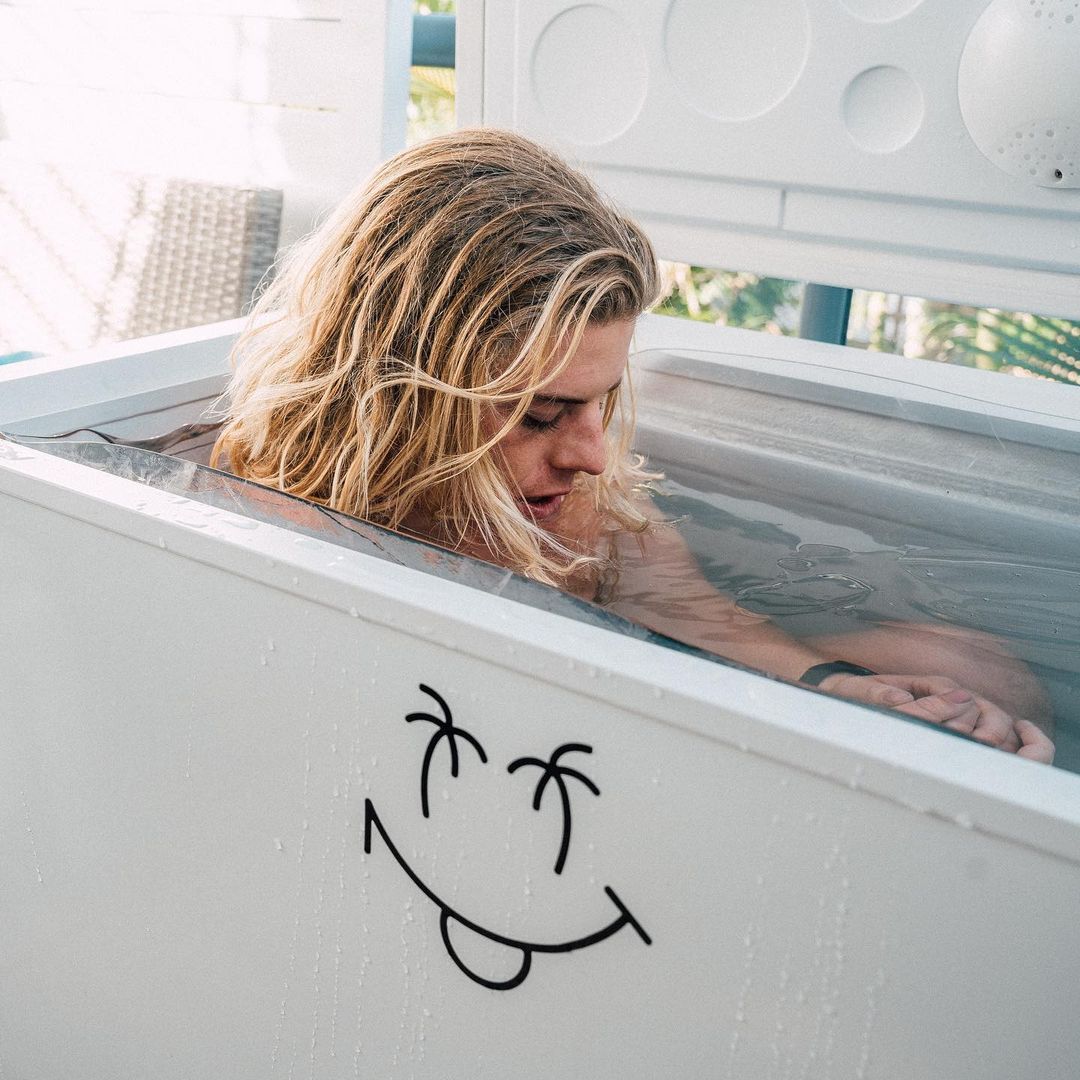 Alex Hayes braving an ice bath
Alex Hayes braving an ice bath
Herbal Approaches to Surfing Recovery
Herbs are a seriously helpful asset to a surfing recovery regime, and there's a ton of great herbs to reduce joint and muscle pain and soreness.
Fenugreek is an excellent choice for promoting creatine, a well-known muscle builder.
Turmeric is a go-to to reduce feelings of pain and soreness, as it is extremely effective at reducing inflammation.
If you feel tired after surfing, Rhodiola is a powerful herb that gives you back lost energy.
And if you really just want to surf forever, a simple multivitamin is the best way to give yourself the vitamin and immunity boost that is necessary for whole health, as being healthy in general is a key to all recovery.
Aside from herbs, other holistic approaches to alleviate soreness for surf session recovery include adding Epsom salts to your baths or using peppermint oil on your skin, as both greatly reduce inflammation surrounding the sore areas, allowing muscles to relax, send nutrients, and grow.
Surfing Rest Days
I know, it's a hard one not to bite when the waves taste so good, but sometimes you have to just tell yourself that it is time to take a rest.
You should rest each muscle group for around 48 hours after working out. Because surfing is more cardio-based, you don't have to follow this as religiously, but do note that after a few days of surfing you might just have to take one off.
Think of it this way. You don't surf as well when you're tired, and it's honestly not as fun, so simply use those rest days as a way to look forward to what is to come and to know that you are getting your body ready for an even better sesh than what you may have had today.
If you are working out in conjunction with surfing, then you have to balance your surfing rest days with even more diligence. Just know that if the forecast is looking good, then you should probably tune back the workout program that week so that you don't over-strain yourself, get hurt, and so that you can properly recover after a surf session.
 These boys idea of a rest day. Cam Richards, Eric Gieselman, Simon Hetrick, Steve Neiley, Photo: Mia Klein
These boys idea of a rest day. Cam Richards, Eric Gieselman, Simon Hetrick, Steve Neiley, Photo: Mia Klein
Takeaways of Surfing Recovery
As much as we would all love to surf forever, a daily ritual for hours on end, you have to let your body rest and recover if you want to avoid injuries and continue progressing with our sport. And listen to it when it tells you that it is tired, for pushing yourself too far will never lend for any positives.
Surfing recovery is a combination of techniques that require your willpower to initiate, and these efforts are well worth the reward, as they are the keystone element to reducing the discomfort of soreness and promoting the proper muscle growth that makes you stronger each time you surf.








